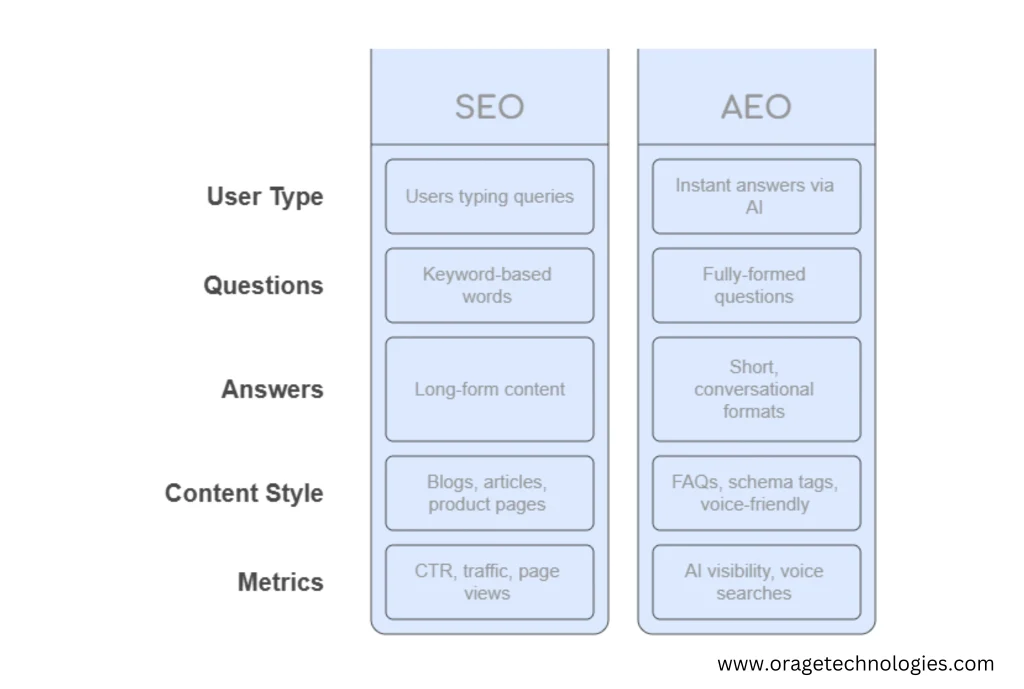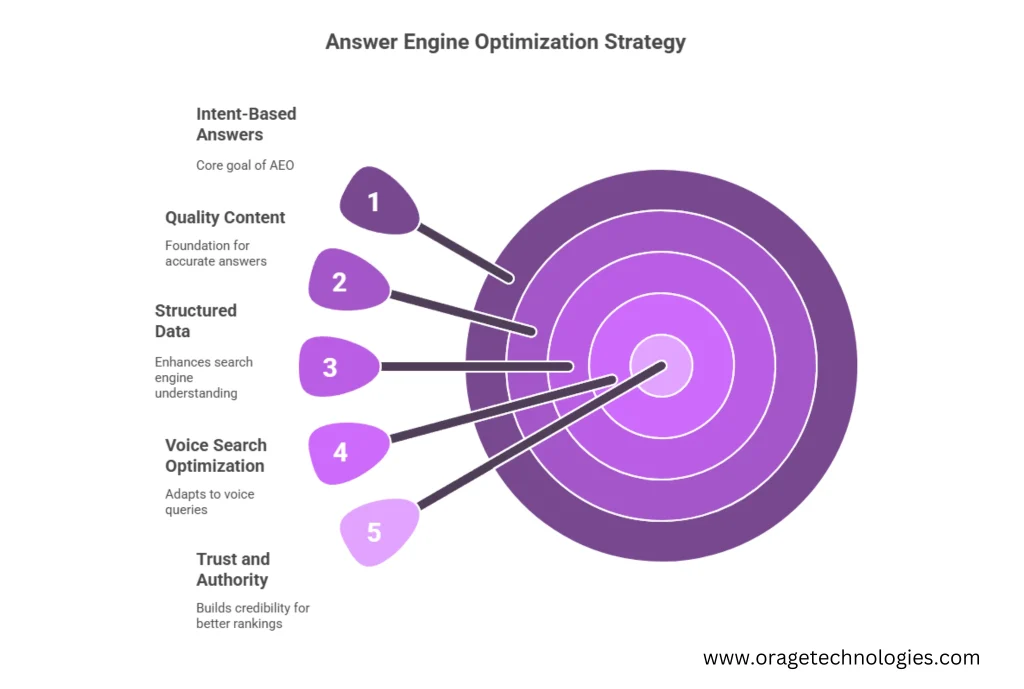A Simple Guide to AEO and SEO
The way we search online is changing, and so are the strategies to stay visible. Search Engine Optimization (SEO) has long been the key to ranking high on Google, with the industry expected to grow to $122.11 billion by 2028, fueled by more online content and faster internet. But SEO has shifted from cramming keywords and links to focusing on real value for users. That’s where Answer Engine Optimization (AEO) comes in—a new approach that delivers instant, precise answers right at the top of search results, capturing about 8.6% of clicks, according to Ahrefs.
So, is AEO replacing SEO, or are they teammates? Let’s break it down in a way anyone can understand.
What’s an Answer Engine?
People want answers fast. With shorter attention spans, we expect search engines to give us exactly what we need without delay. Answer Engines are the solution. Powered by AI, they pull the best answer from across the web and display it directly—often as a “featured snippet” or through voice assistants like Siri or Alexa. No clicking through multiple links required.
For example, ask, “What’s the best pizza place nearby?” and an Answer Engine might show a quick response with a restaurant name and address, sourced from trusted sites. It’s all about speed and relevance.
What Is Answer Engine Optimization (AEO)?
AEO is about optimizing your content to appear in these instant-answer spots, often called “position zero” or AI-generated results. It means creating content that directly answers user questions in a clear, concise way. Unlike SEO, which drives clicks to your website, AEO focuses on providing answers right on the search results page, whether through text, voice search, or AI tools like Google’s Search Generative Experience.
AEO vs. SEO: What Sets Them Apart?
Both AEO and SEO aim to help users find answers, but they work differently. SEO is about boosting your site’s ranking to attract clicks, using things like keywords, great content, and technical tweaks. AEO, however, is about being the answer users see immediately, often without visiting your site.
Here’s a quick comparison:
Feature | SEO (Search Engine Optimization) | AEO (Answer Engine Optimization) |
|---|---|---|
Target Audience | Users typing queries into search bars | Users asking questions via AI or voice assistants |
Query Type | Keywords, e.g., “best coffee shops” | Full questions, e.g., “Where’s the best coffee shop near me?” |
Content Style | Blogs, articles, product pages | Short, conversational answers, FAQs, schema markup |
Success Metrics | Click-through rates, traffic, rankings | Answer visibility, voice search accuracy |
Main Goal | Drive website visits | Provide instant answers on search pages |
In short, SEO brings users to you, while AEO answers their questions on the spot.

How to Win at AEO: 6 Easy Strategies
To shine in AEO, you need to think like your audience and deliver exactly what they want. Here are six simple ways to boost your AEO game:
1. Know What Users Are Asking
Figure out what questions your audience is typing or speaking. Tools like Google Keyword Planner or Google Search Console can show you popular queries, especially those starting with “What is” or “How to.” Focus on the user’s intent—what problem are they trying to solve?
2. Write Clear, Direct Answers
Create short, high-quality content that answers questions straight away. Use natural language, bullet points, and clear headings to make it easy for search engines to grab your content for snippets or voice search.
3. Add Structured Data
Structured data, like schema markup from Schema.org, helps search engines understand your content better. Use FAQ, How-To, or Q&A schemas to make your pages eligible for featured snippets or answer boxes.
4. Optimize for Voice Search
Voice searches are conversational and often local, like “Find a gym near me.” Write in a friendly, natural tone and answer in full sentences. Include “near me” phrases to boost local visibility.
5. Create FAQ Pages
FAQ pages are perfect for AEO. They answer multiple user questions in one place, improving both user experience and search results. Add structured data to your FAQs and update them regularly based on performance.
6. Build Trust and Credibility
Search engines love trusted sources. Publish consistent, valuable content to establish your brand as an authority. The more credible your site, the more likely it is to appear in answer snippets.

Why Businesses Should Care About AEO
AEO is a powerful tool for businesses wanting to stand out. Here’s why it matters:
1. Happier Users, More Engagement
AEO gives users quick, accurate answers, which builds trust. When users get what they need fast, they’re more likely to explore your site, stay longer, and come back. This can lead to lower bounce rates and higher conversions.
2. More Organic Visibility
Showing up in featured snippets, answer boxes, or voice search results boosts your brand’s exposure. Since over half of consumers use voice search to find local businesses, AEO can supercharge your local SEO efforts.
Will AEO Overtake SEO?
AEO isn’t here to replace SEO—it’s more like its partner. SEO builds your overall online presence, while AEO ensures your content answers questions instantly. Together, they help you reach users in different ways, adapting to modern search habits like AI and voice queries.
Frequently Asked Questions
How do I optimize for Answer Engines?
Use question-focused keywords, structured data, and clear, concise answers to rank in featured snippets or voice search results.
What’s the difference between AEO and SEO?
AEO delivers instant answers in search results, while SEO focuses on driving clicks and improving website rankings.
What does engine optimization mean?
It’s the process of improving your content’s visibility in search engines using strategies like keyword research, quality content, and technical improvements.
